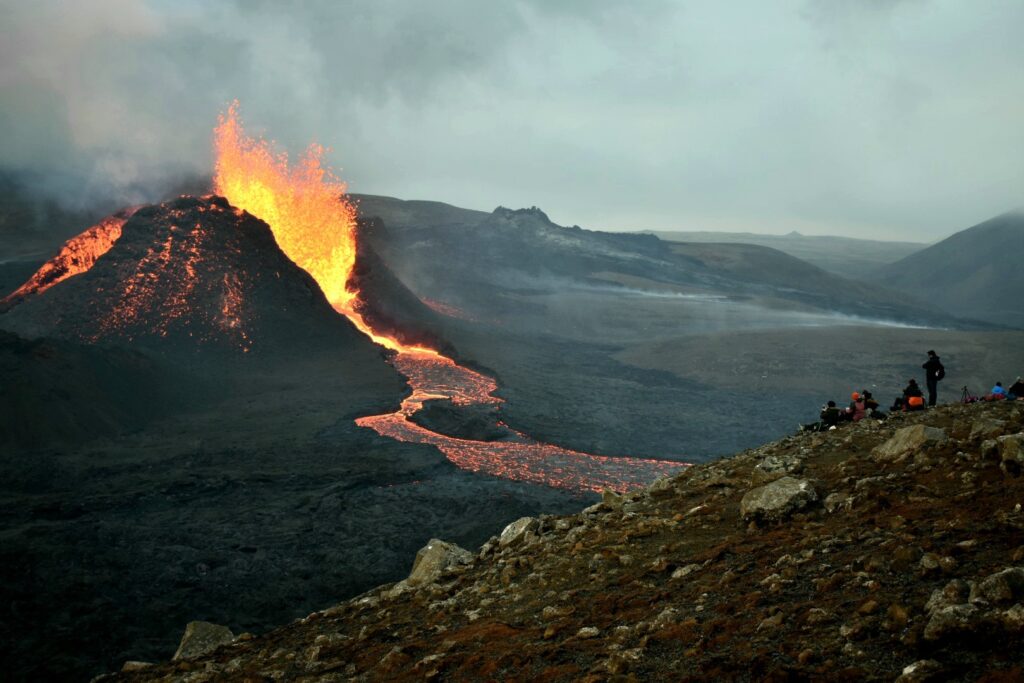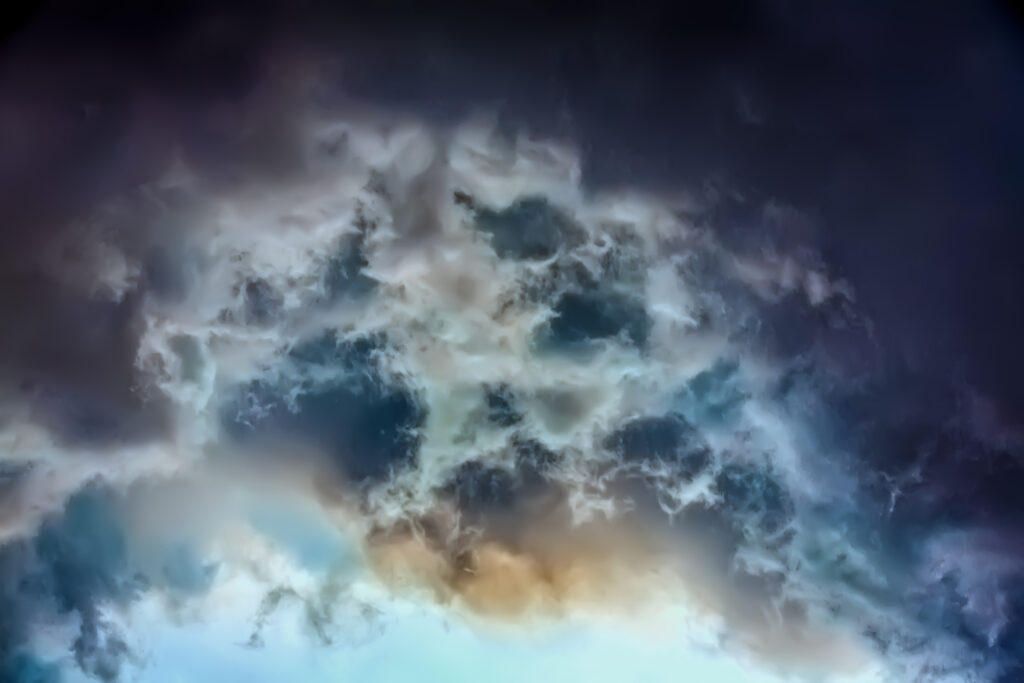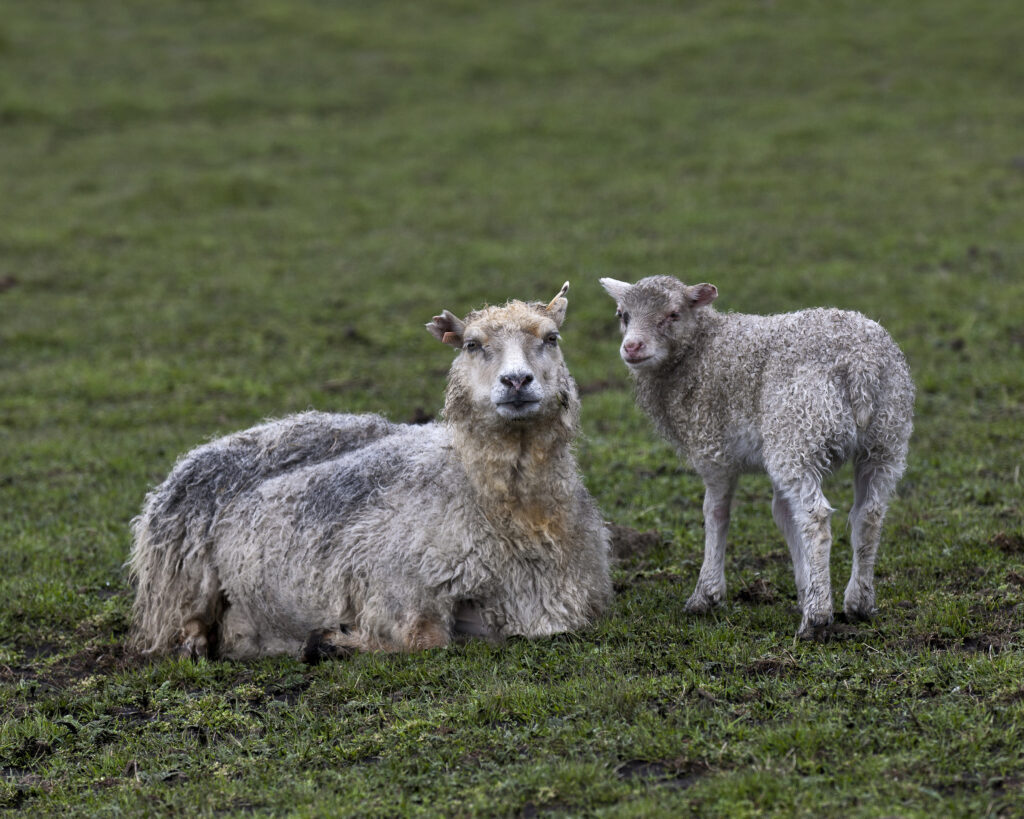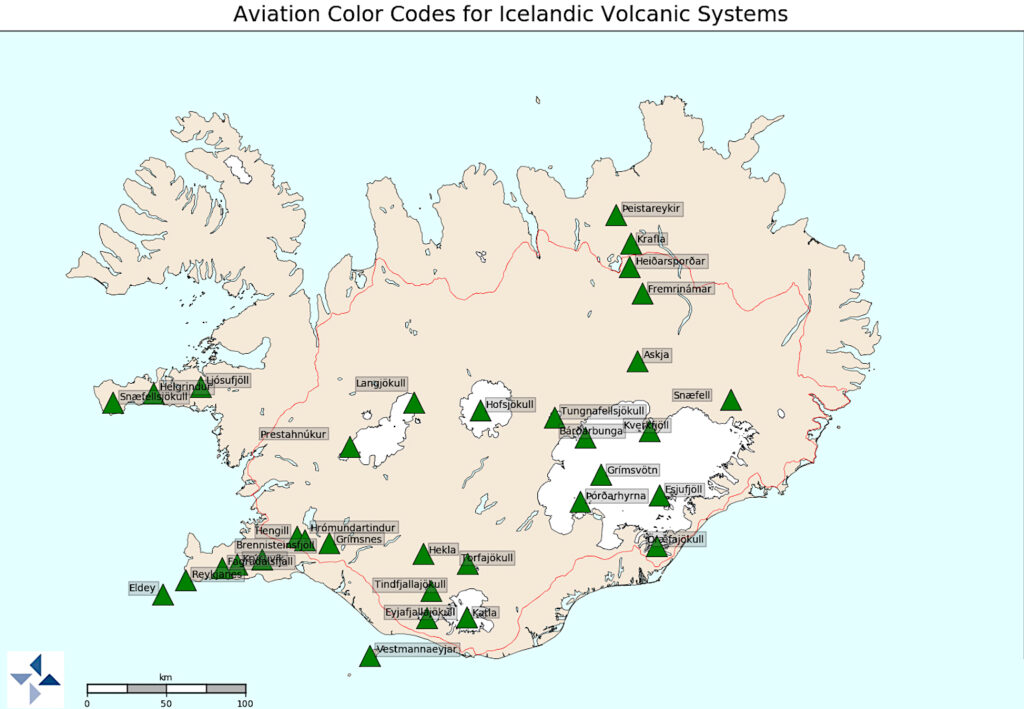Slow Death by Volcano
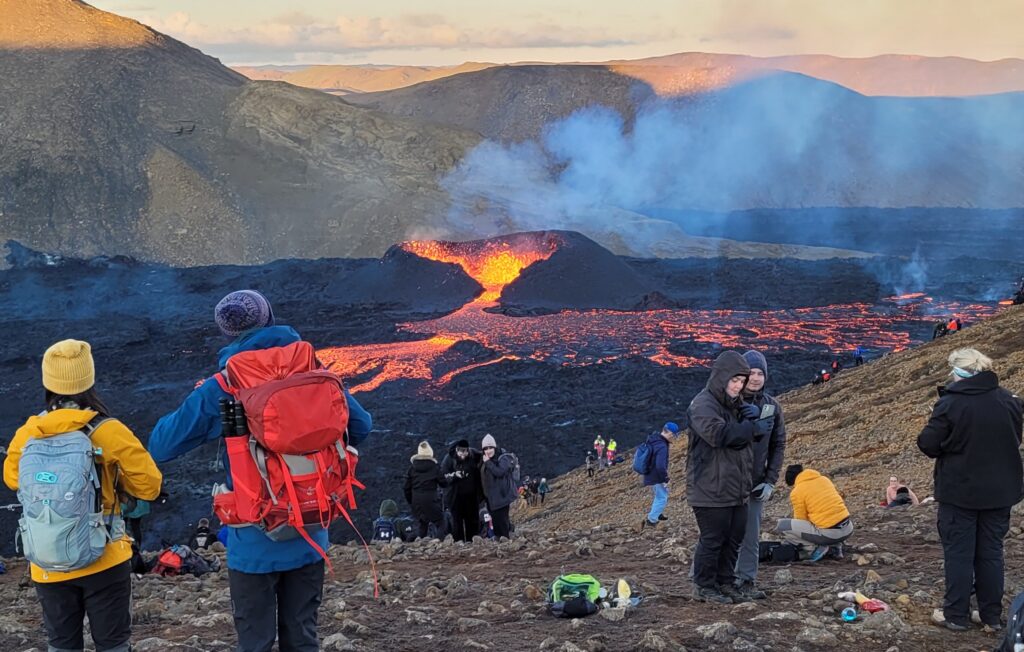
THE RISE OF ICELANDIC VOLCANOES
In the fall of 2022, my friends and I braved intense winds, hiked across boulder-strewn fields, and faced a cold so intense that our fingers locked if we took them out of our gloves for more than a few seconds. Like thousands of other Iceland residents, our goal was to see the spectacular Meradalir volcano, the country’s latest volcano to erupt. For centuries, volcanoes have played a major part in the island’s history, so as a historical anthropologist specializing in Iceland, I couldn’t pass up the opportunity to see another one in action.
A year earlier, the eruption of nearby Fagradalsfjall captured the world’s attention when it triggered tens of thousands of earthquakes before the lava burst forth. While the rest of the world was on COVID-19 lockdown, almost everyone in Iceland—including me—was flocking to Fagradalsfjall, playing volleyball in front of the lava plumes, dancing naked by the crater, and cooking hot dogs on the towering walls of cooling lava.
The Fagradalsfjall eruption took us all by surprise. Southwest Iceland’s Reykjanes Peninsula, where both these volcanoes ripped open the Earth, had remained dormant for more than 800 years. But these eruptions signal that Reykjanes is geologically waking up. Vulcanologists suspect a new volcanic era is burgeoning on Reykjanes, and it could last decades or even centuries.
But such dramatic events are far from a new phenomenon in the land of ice and fire. And Iceland’s volcanoes are often far more deadly than the picture-perfect eruptions of 2021 and 2022. For example, the 1783 Laki eruption—one of the largest in human history—ultimately killed around 20 percent of Iceland’s population and up to 75 percent of its livestock.
Now, several new anthropological studies on the health impacts of Iceland’s volcanoes are shedding light on what makes them so hazardous—and some of the culprits may surprise you. The immediate effects of an eruption can be serious. But it is the long-term actions, including social responses, that truly determine a volcano’s deadliness.
THE HAZARDS OF VOLCANIC AIR IN ICELAND
When people think of volcano-related deaths, they may imagine rivers of lava consuming towns or people asphyxiating from volcanic gasses in seconds. But a series of papers from the National Museum of Iceland found that a more insidious danger is long-term environmental poisoning.
Volcanoes release particulate matter and sulfur dioxide, which irritates the respiratory system and can exacerbate preexisting heart and lung conditions. Most scientific research on volcano-caused health consequences focuses on these airborne pollutants because they “are among the most visible, widespread, and damaging forces released during eruptions,” Joe Walser III, a curator of physical anthropology at the National Museum of Iceland who led these studies, told me in an interview.
For example, the Laki eruption spewed thick fog that spread so widely, politician and inventor Benjamin Franklin saw it in France, writing in his journal:
“This fog was of a permanent nature; it was dry, and the rays of the sun seemed to have little effect towards dissipating it. … Hence perhaps the winter of 1783–1784 was more severe than any that had happened for many years.”
Historical accounts of Laki describe people getting lung lesions from inhaling the fog that Franklin described. A 2011 study found that if a Laki-style eruption happened today, air pollution would cause 142,000 excess deaths across Europe over the following year.
However, eruptions’ effects on air quality can dissipate quickly. So, Walser and his team wanted to determine if people living near volcanoes were ingesting more volcanic toxins through their water and food.
ANTHROPOLOGISTS INVESTIGATE VOLCANIC FLUORIDE
To test their hypothesis, Walser’s team took samples from 186 skeletons buried near Icelandic volcanoes. The individuals sampled dated from around A.D. 1000 to the late 1800s. The first pollutant researchers tested for was fluoride, a common element in the Earth’s crust that is released by volcanoes in gaseous form.
In small doses, fluoride does wonders for teeth. Many municipalities in the United States add it to drinking water to help ward off cavities. But exposure to high levels of environmental fluoride can lead to fluorosis, which can essentially turn ligaments to bone, severely malform the tooth enamel, weaken bones, atrophy muscles, and spawn neurological defects.
“We often think of fluoride as being the main volcanic pollutant,” Walser says. He points to examples such as “the dramatic bone changes and high fluoride bone concentrations seen on individuals that perished during the eruption of Pompeii.”
While eruptions might last only a couple of days, volcanoes belch fluoride-filled ash that can remain in the environment for years. Later, wind and human-related activity can throw this ash back into the air and spread it further. Fluoride-laden volcanic debris from Iceland’s Mount Hekla eruption in 1970, for example, dissolved into groundwater and ponds, and coated grazing lands. Although many farmers kept their flocks away from contaminated pastures, around 8,000 animals ultimately died from fluorosis.
Interestingly, Walser and his team found that, despite living right next to eruption sites, few historical Icelanders experienced fluoride toxicity. “The human population likely fled during eruptions and avoided contaminated drinking water, unlike the livestock,” Walser explains. “Even today, livestock are most likely to get fluorosis as they continue grazing in the area affected by volcanic fallout.”
In addition, the research team suspects that Iceland’s cold temperatures may protect people from fluoride toxicity. Unlike warmer volcanic areas, where groundwater fluoride can become concentrated from continuous water evaporation, Iceland remains cool year-round. That means the fluoride never gets a chance to reach levels high enough to severely impact people. Icelanders are therefore somewhat protected from their volcanoes, unlike people living near Pompeii and Naples, Italy, where skeletal fluorosis continues to be a problem centuries after the eruption of Mount Vesuvius in A.D. 79.
Still, Walser’s team did find some evidence of elevated fluoride in skeletal samples. This indicates that some historical Icelanders experienced chronic, low-level exposures to fluoride for years following eruptions.
The researchers also point out that metal toxicity increasingly comes from another human-caused source: manufacturing. Many modern cases of livestock fluorosis can be traced to groundwater contamination from Iceland’s booming aluminum processing industry.
But volcanoes don’t just emit fluoride. They can also pump out dozens of other heavy metals, including mercury.
MERCURY FROM ICELANDIC VOLCANOES
Like fluoride, mercury is highly toxic in large doses. Known health effects include brittle teeth, bone loss, permanent physical and psychological impairment, and even death.
To investigate what effects mercury might have had on human health, Walser’s research team sampled skeletons from the medieval Skeljastaðir cemetery, located at the base of Mount Hekla, which continues to leach mercury into the environment today.
Every skeleton the team sampled had elevated mercury concentrations, and some were “remarkably high,” according to the research paper. One individual showed several signs of metal toxicity, including adult canines that never emerged and bony growths on their jaw. While the researchers caution that it is difficult to directly tie health effects like this to one metal or another, it seems almost certain that metal toxicity was the culprit.
Learn more about anthropological research in Iceland in our podcast episode “A Story of Icelandic Skulls.”
Surprisingly, Walser’s team found some of the highest levels of mercury exposure at a site miles away from any eruption. At the medieval monastic hospital of Skriðuklaustur, multiple samples had elevated mercury levels. For centuries, mercury was administered as a medical treatment for syphilis in some countries. It appears this was the case in Iceland, since individuals with high mercury levels at the hospital also showed evidence of intense infectious diseases.
THE SOCIAL HAZARDS OF VOLCANOES
Fiery-hot lava flows, toxic fog, and heavy metal poisoning are certainly deadly. But research suggests that one of the most dangerous aspects of volcanoes is more subtle: a lack of social safety nets in the wake of eruptions.
A recent study found that much of the devastation caused by the Laki eruption in the 1780s was not necessarily due to physical trauma from lava or air pollution. Rather, a significant factor was Danish and local governments’ hesitation to provide food aid to Icelanders after the resulting crop famine.
As the study author, climate scientist Claudia Wieners, writes, “[T]he Danish government was so afraid to incur aid expenditures that might later prove unnecessary, that it preferred to delay action by a year or more and risk that the aid might come too late to do any good. … The effects of [the Laki] ‘natural’ catastrophe could therefore have been significantly reduced by efficient government measures.”
In another example, the individuals sampled from Skeljastaðir cemetery had experienced potentially lethal exposure to volcanic mercury from Mount Hekla, whereas people living just a few kilometers away did not. Some of the Skeljastaðir individuals with the highest levels of mercury poisoning actually post-date the eruption. This means people remained in the area long after the volcanic event.
The study authors suggest that if policies had been in place that facilitated Skeljastaðir residents’ move to uncontaminated areas and assisted them in finding alternative sources of water and food, the mercury poisoning would have been mitigated.
Since volcanic activity is predicted to increase in Iceland, the research on Skeljastaðir indicates that governmental and nongovernmental organizations may need to ramp up social safety nets that enable people in high-risk areas to temporarily relocate. In addition, the research on Laki and other volcanoes suggests the need for providing food aid and assistance to farmers and livestock owners.
Walser and his team agree. “It may be even more vital to reinforce socioeconomic circumstances, geopolitical conditions, and disaster mitigation protocols in regions with volcanic risks,” he says, “rather than focusing on concerns over the severity of the immediate, temporary effects resulting from volcanic eruptions.”
In the meantime, maybe avoid cooking your hot dog directly on cooling lava, just in case.































